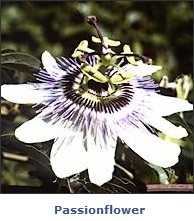 Mimosa
Mimosa
Feathery, fernlike leaves of the evergreen shrub Mimosa pudica curl inward when touched. Tiny, deep-pink flowers appear in the summer.
 Mock Orange
Mock Orange
The common mock orange, also called syringa, is a deciduous shrub covered with clusters of small, fragrant, cream-colored flowers. Syringa is the state flower of Idaho.
 Musk Thistle
Musk Thistle
The musk thistle has decorative composite flowers but its spiny leaves and branches create a weedlike appearance. This species of thistle bears purple flowers and is common in fields in the northeastern United States.
 Nail Polish Flowers
Nail Polish Flowers
The nail polish plant, so-named because of the bright color of its flowers, belongs to the four-o’clock family. It grows best in sunny locations in fertile, well-drained soils.
 Nightshade
Nightshade
All parts of the belladonna, or nightshade, Atropa belladonna, are poisonous. The drug atropine, used to dilate the pupils of the eyes, is one of several narcotics extracted from its leaves and roots.
 Opium Poppy
Opium Poppy
The opium poppy’s green, unripe seed capsule, revealed when the flower petals drop, contains a milky sap that is the source of opium. To collect the sap, slits are made along the circumference of the seed capsules, enabling the milky sap to ooze out and dry. It is then scraped from the capsules, pressed into cakes, and dried to form the rubbery, yellow-brown opium. Natural derivatives of opium include morphine and codeine, used extensively in medicine as sedatives and pain killers. Heroin is a synthetic derivative of morphine. Morphine and codeine are habit forming. Heroin, which is especiallly addictive, is illegal in the United States.
 Oxalis
Oxalis
Oxalis belongs to a group of subtropical and tropical tuberous or fibrous-rooted perennial or semievergreen plants commonly cultivated for their colorful flowers. Although some species are well suited for cultivation in rock gardens, others are considered invasive. In some cases the tubers and leaves are edible.
 Passionflower
Passionflower
The passionflower, a close relative of the violets, is a woody-stemmed climbing plant that grows to a height of 10 m (30 ft). Passionflowers are cultivated for their unique flowers and edible fruits.
 Peanut Plant
Peanut Plant
Although native to South America, the peanut plant is now cultivated in those parts of the United States, South America, Africa, and Asia having long, warm, growing seasons. A member of the pea (legume) family, the peanut is rich in protein, B vitamins, and oil. The plants themselves can be used as livestock feed.
 Pear Tree
Pear Tree
The pear tree is a member of the rose family. It is cultivated for its fruit throughout the cool, humid, temperate regions of the world. Pear juice is used in the production of a number of commercial fruit drinks.
 Peony
Peony
Peonies have elaborate flowers, with five to ten petals and numerous stamens (male flower parts) and carpels (female flower parts). The plants are native to Europe, Asia, and the northwestern United States. Certain varieties are indigenous to wooded areas, while other varieties have been cultivated for decorative purposes in gardens.
 Petunia
Petunia
The petunia, a member of the nightshade family, is commonly cultivated as a garden plant. Petunias exist in a wide number of varieties, with flowers of different colors, shadings, and shapes.
 Pimpernel
Pimpernel
The pimpernel, cultivated for its flowers, grows best in sunny locations in moist, fertile soils. The blooms of certain species close at the approach of rainfall and open in bright sunshine. These species carry the nicknames shepherd’s barometer and poor man’s weatherglass.
 Pineapple Mint
Pineapple Mint
The pineapple mint is a perennial plant cultivated both as an ornamental and for its aromatic leaves, which are used as a culinary herb. It grows to a height of 45 cm (18in) and can become invasive in gardens.





















